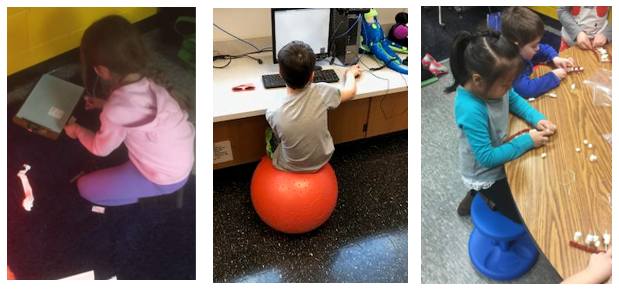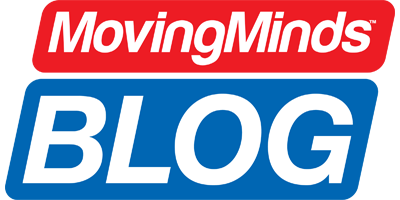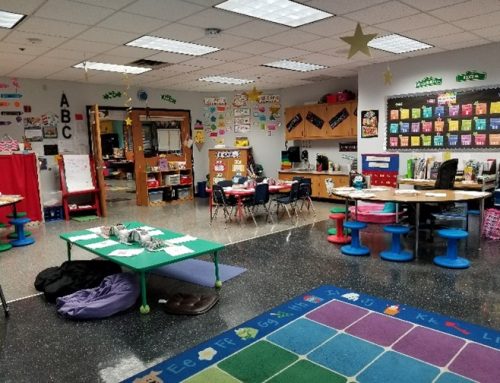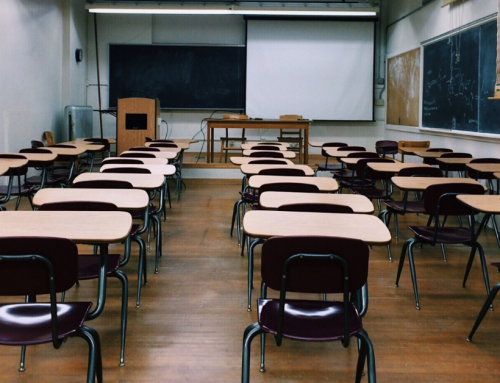As a Kindergarten teacher, I’m always looking for quick and easy ways to get my students moving without taking up a lot of instructional time. I use a variety of flexible seating options to help meet this goal. Starting into my third year of teaching I realized something, I HATED traditional seats and the amount of time my students were spending being sedentary. I quickly started researching flexible seating and its benefits.
Getting the Supplies
After researching the benefits of flexible seating, I started to make a list of possible seating that may be beneficial to my five year old students. What could I easily afford and wouldn’t take up too much space in my tiny room? What could be donated or will I need to purchase? Here is a list of some of the flexible seating options that I now offer in my room:
-

- Wobbly stools like KORE Wobble or TiltED
- Bean bag chairs
- Rugs
- Bath mats
- Yoga mats
- Prickly pads
- Rocking chairs
- Swimming pool
- Television trays and floor desks
- Gaming chairs
- Small seat cushions
- Standing stations – I’ve got two little ledges built in to the wall that students can stand at
You can find most of these items from Moving Minds, an active classroom furniture and activity supplier, or also at yard sales and Facebook groups. Donation sites are also a great option and are a fun way to get the students’ parents and families involved.
Start Slowly
I didn’t implement all of these new seating options to my Kinders at once. We started the year with our four traditional tables and sets of chairs. Each week, I would slowly implement in a new seating option. I like to start with the lowered table first. It seems to be the least shocking! At our lowered table my students have the option of using a yoga mat, chair cushions, or a prickly pad. Then I bring in the wobbly stools for our guided reading tables and the ball chairs for our computer station. Lastly, I remove tables!! After removing tables, I get out options like the rocking chair, gaming chair, rugs, and TV trays! I always like to leave one table with traditional seating for my students that prefer this choice.

Why Incorporate Active & Flexible Seating?
Many people ask me, “Why? What’s the benefit? Isn’t it noisy? Isn’t it messy? What do they write on if they don’t have a traditional table? Where do they keep their supplies?”
I always respond that I do this because of the increase in their movement and engagement that I see. No longer are they getting restless because they are unable to move. Sometimes when you walk in you may see a student planking at the yoga mat while working or you may see one doing squats at their standing station, but no matter what, they are learning. (I also suggest keeping supplies and clip boards close by.) I have found with the non-traditional seating options that the students sitting in these places are much quieter than at the traditional table.
Benefits of Active & Flexible Seating in Classrooms
Some benefits that I have seen since implementing flexible seating include:
- More movement- walking in place, planking, squatting, bouncing, wobbling, laying on back or side, kneeling, rocking, and so much more.
- It doesn’t take up any instructional time! Students are able to move while still working and learning.
- Increased engagement- I especially notice this in areas that have two to three seats! Students work very well together.
Implementation in Your Classroom
Now it’s your turn to follow some of these simple steps to get your students moving without interruption! What will you do? Give a ball seat a try? Maybe wobble on a stool?
Jessica Tice is currently in her fifth year of teaching Kindergarten at Western Elementary in Scott County, Kentucky. She holds a bachelor’s degree in Elementary Education and a master’s degree in Teacher Leadership and English as a Second Language.
Tice is a mom to two very busy boys that are active in school, soccer, and scouts. She enjoys working out daily and instilling that same value in her students by incorporating physical activity and purposeful movement throughout the school day.





Leave A Comment